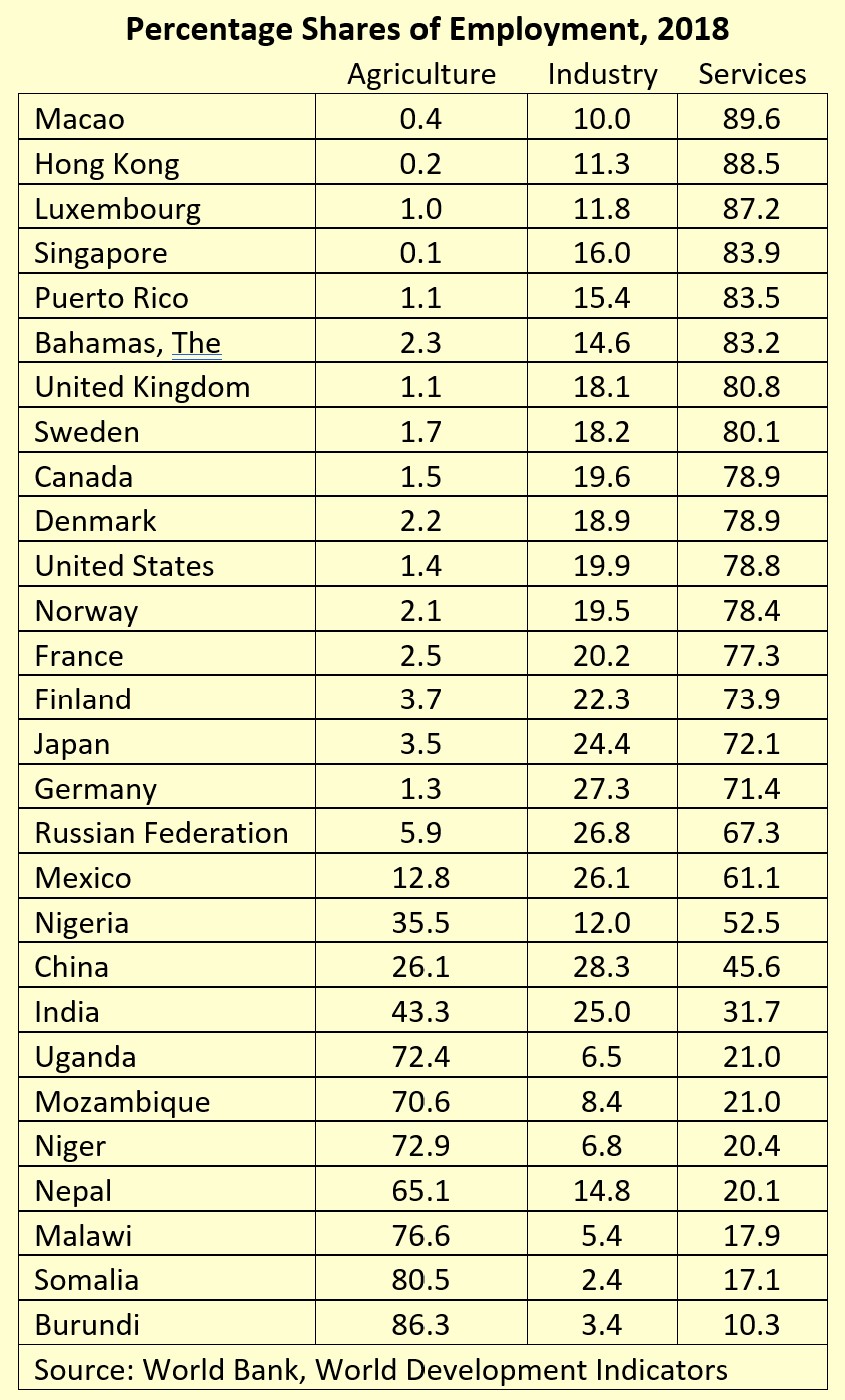|
The
United States: The Service Economy
I.
The Environment
A.
Large size and rich natural
resources--7% of world land area for 5% of
world's population. Gavin Wright—resource abundance made
major contribution to industrialization between 1890 and 1940.
B.
"Melting Pot" Culture
-- Benefit: Complementary skills. Cost:
Discrimination and rivalry.
C.
Philosophy of Individualism
-- belief that individuals can have significant impact on
society; success through individual hard work and
frugality.
Reflected in many of our institutions: local voting systems,
college accreditation, movie rating systems, etc. Encourages
experimentation, innovation, entrepreneurship. Discourages
welfare spending. Made it difficult to impose health protocols
that kept other countries safer during Covid.
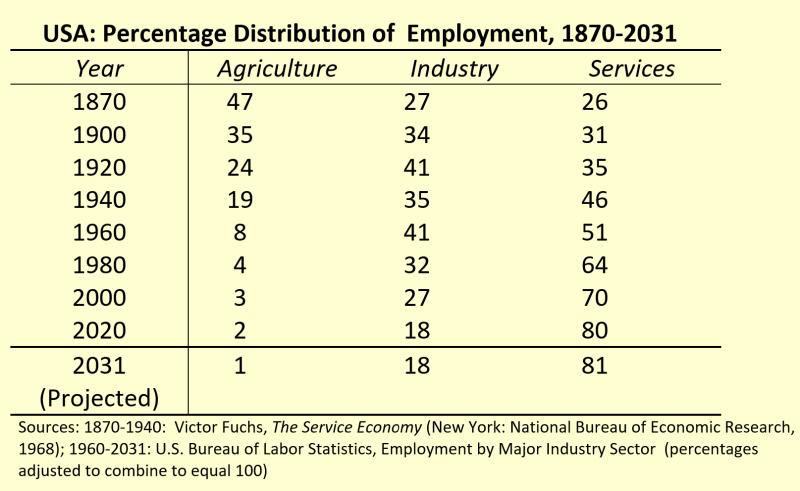
II.
The Changing Structure of the Economy
A.
Agriculture most
important employment sector until 20th century. Large
agricultural exporter during the French Revolution and
Napoleonic wars. Industry
dominated employment only from 1900-1930.
B.
The Service Sector -
Employs about 80% of the United States labor force,
projected to rise to 81% by 2031. Several subsectors of
services (business services, health care, state/local
government, leisure/hospitality, and retail trade) already
employ more people than all of manufacturing. Now there are
more people in business/professional services, alone,
than in all of the goods producing sector (mining,
construction, manufacturing, and agriculture), and by 2031
that will also be true of health care.
See projections
to 2031.
1.
Causes of growth
a.
income growth - climbing up Maslow's hierarchy of needs
b.
global competition and changing comparative advantage
c.
productivity growth differential—slow productivity growth in
service sector requires larger share of labor, higher
current prices
d.
labor supply—women’s preferences
2.
Significance
-
a.
Productivity - Growth is
relatively slow in services, so rising service share has
caused overall slowdown and higher inflation
(illusion?).
b.
Stability - Has increased the
stability of output and employment. Service employment
has risen almost every year, aside from downturn during the
2009-2010 Great Recession. Stable,
perhaps because:
i.
higher percentage of self-employed workers.
ii.
flexible incomes (piece work or commission).
iii.
no inventories.
iv.
government services stable.
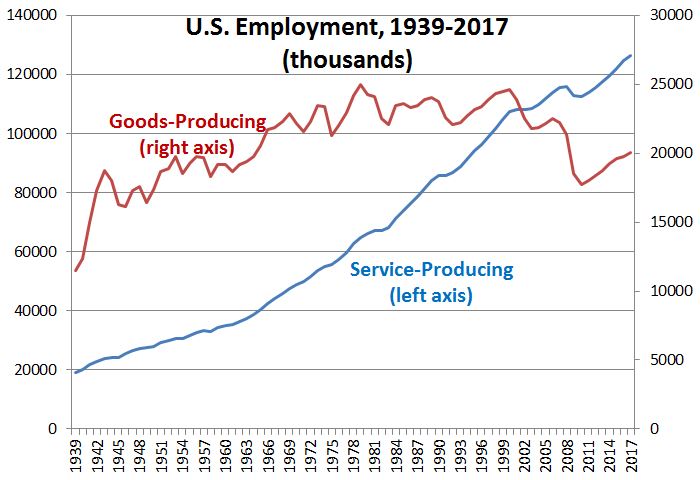
c.
Positive contribution to balance of payments. See
Data.
d.
Labor and income distribution -
Many people are self employed and few are unionized.
Service sector growth apparently contributes to income
inequality.
III.
Industrial Organization
-- At the end of the Civil War, the age of big
business began. Today, concentration in U.S. is
comparable to levels in France, W. Germany, Italy, Japan and
the U.K. Shepherd found that the share of national
income originating in "effectively" competitive industries
increased significantly between 1958 and 1980. More
recent research by Abdel-Raouf suggests that the
effectively competitive share of the U.S. economy continued to
grow to through 1997, and monopolies fully disappeared. Since
that time, however, Grullon,
Larkin and Michaely find that the trend has reversed,
and more than 75% of US industries have experienced an
increase in concentration levels over the last two decades.
They blame lax enforcement of antitrust regulations and
increasing technological barriers to entry. In the past,
concern about concentration was focused on the railroads and
manufacturing - now it has shifted to Amazon, Facebook, and
other technology firms.
IV.
The Labor Market—U.S. unemployment
has been lower than European during most years since 1982. At
the end of 2019, the U.S. rate was 3.5% when the EU rate was
6.3%.
Why? Smaller wage increases, flexible labor market.
Union membership declined from 27% in 1950s to about 11% in
2020. Furthermore, union members accounted for about 35% of
public-sector workers in 2020, but only 6.3% of private-sector
workers. (Source)
A. Why decline of unionization?
1.
Service sector, self employment.
2.
Job satisfaction.
3.
Employer resistance.
4.
Government substitution.
B.
Have unions increased wages at expense of profits or at the
expense of nonunion wages?
V.
The Financial Sector --
Well-developed financial markets. Dual banking system with
gradual strengthening of central bank (Federal Reserve created
in 1913; gained control of reserve requirements for all
federally insured depository institutions in 1980. U.S. equity
markets are dominant in the world:
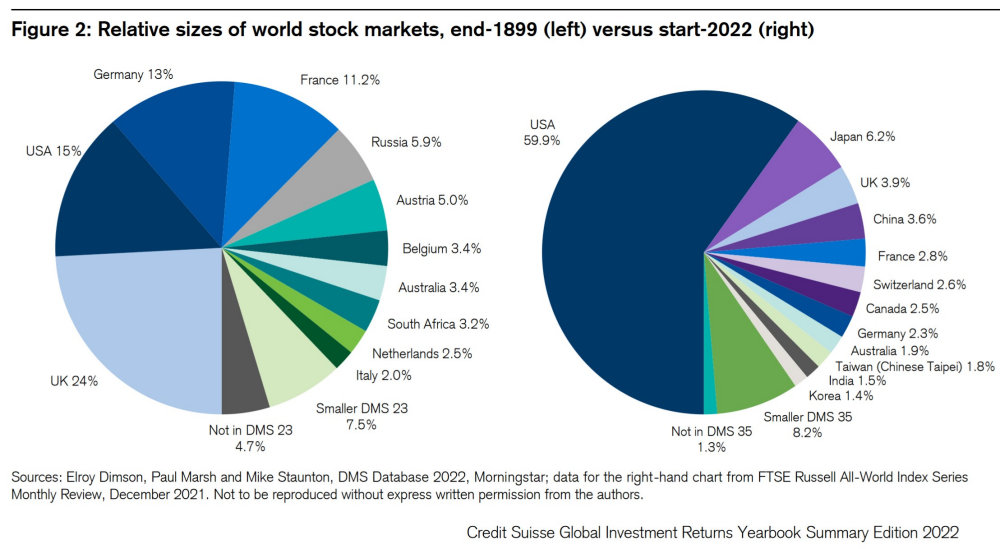
https://www.credit-suisse.com/media/assets/corporate/docs/about-us/research/publications/credit-suisse-global-investment-returns-yearbook-2022-summary-edition.pdf
and
the U.S. Dollar has declined
in its near monopoly as the major reserve
currency, but is still in a commanding
position. That's one of the main reasons that the U.S.
runs international trade deficits - other countries want to
sell goods to us to obtain Dollars, not to buy U.S. goods, but
to hold reserve balances (savings accounts) and to buy good
from other countries that also want to hold Dollars.
VI.
The Governmental Sector --
Federal/State/Local division of labor. Relatively
non-interventionist.
A.
Regulation - How much safety do we want? Banks?
B.
Fiscal and Monetary Policy -
Normally, the national budget is prepared and proposed by the
executive branch; examined, amended, and approved by the
Congress; and signed into law by the President. Monetary
policy is set by the Federal Reserve, insulated from political
pressure. No formal use of indicative planning or
industrial policy.
During the past couple of years, there's been a continuing
debate over the sizes of the Covid relief bills that were
passed by Congress and whether they were the cause of our
higher rate of inflation (or whether it's caused more by
supply disruptions. In the comparative data below,
there's little correlation between Covid fiscal stimulus
programs and acceleration of inflation. The relationship may
be a bit stronger with reduction of unemployment.
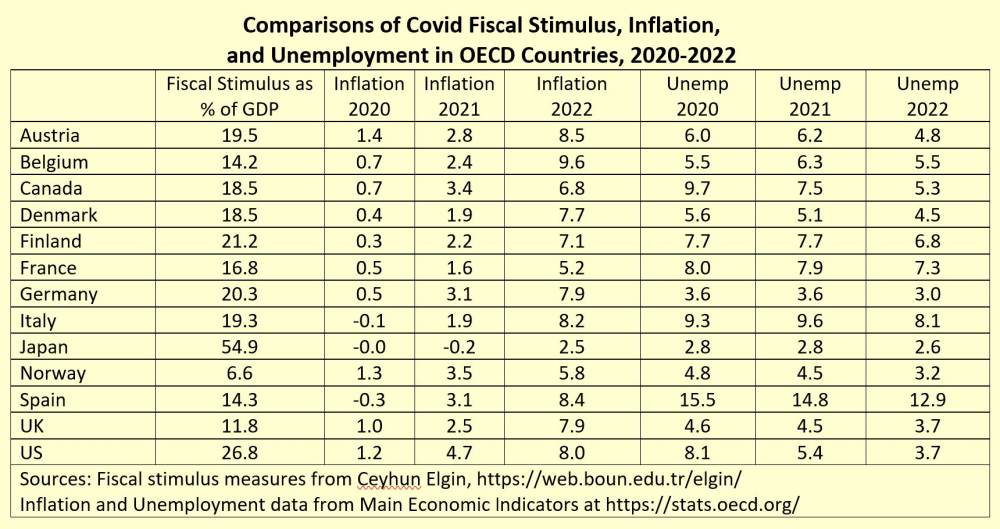
C. Distribution of Income
- relatively unequal compared to other industrial
nations. Resistance to governmental
redistribution.
Two phases - 1940s-1970s, rising incomes of bottom 90%, and
then decline. Since 1980s, rise of the top 1%.
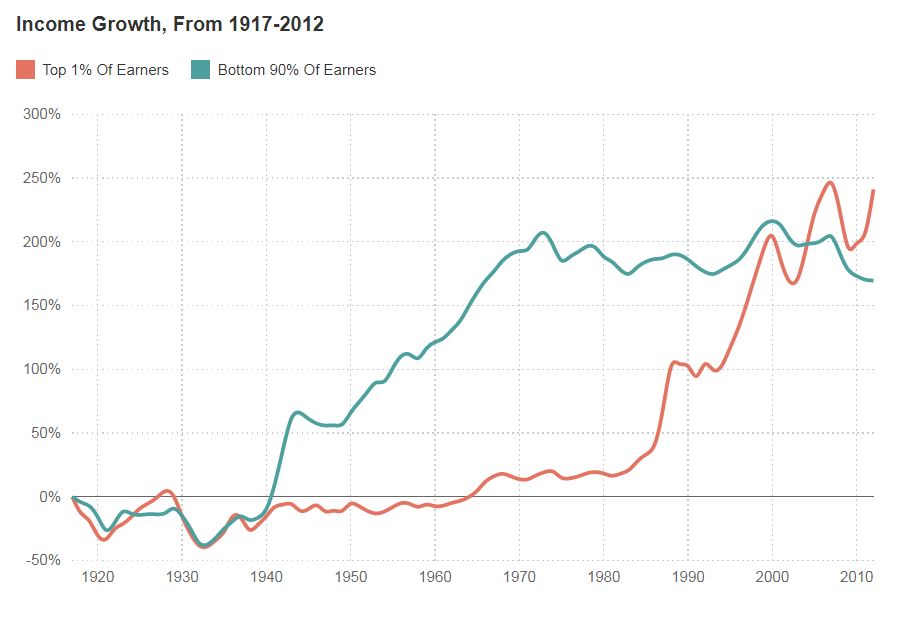
Source
According to recent
work by Blanchet, Chancel, and Gethin, the average
income level in the U.S. (at PPP) is higher than in Western
Europe, but average incomes of the bottom half of the income
distribution are lower in the U.S. than in Western Europe.
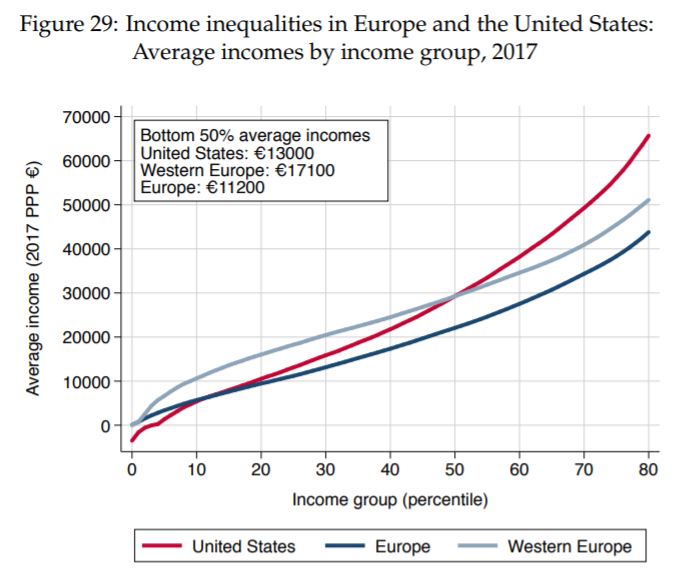
That's true, despite the fact that the U.S. tax system seems
to do more to level incomes than European taxes do:
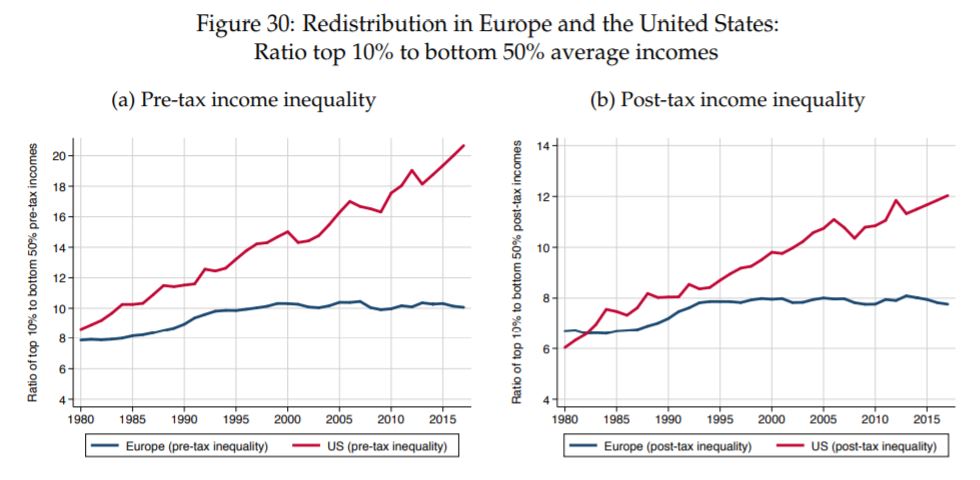
Their conclusion is that Europe relies more on
"predistribution" - investments in health care and education,
effective antitrust laws and labor-market regulations, and
relatively strong labor unions - and the U.S. relies more on
"redistribution" - progressive taxes (which have grown less
progressive) and transfer payments.
|

